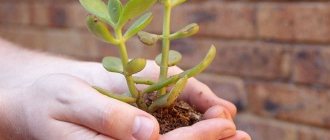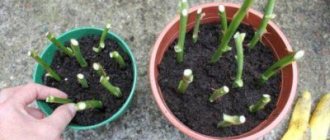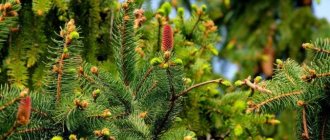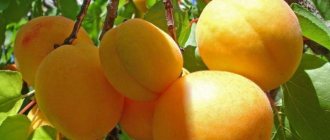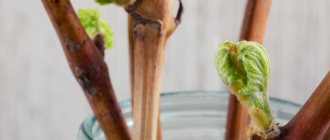A symbol of greatness and power, the oak tree can grow in one place for about 1-2 centuries. This means that the long-lived tree seedling you planted will delight more than one generation of relatives.
A beautiful spreading tree with a dense, tent-shaped crown, the oak tree needs a large area, provides great shade and requires virtually no maintenance.
You can grow a giant oak from an acorn or by planting a purchased plant seedling. How to plant a tree on your own site and what care to provide to the growing crop - read in this collection of material.
Oak, botanical certificate
- Oak is a well-known perennial deciduous plant belonging to the Beech family.
- The natural habitat of oak is considered to be regions of the northern hemisphere of the earth with a prevailing temperate climate.
- Oak trees are easily recognized by their characteristic lobate leaves and nut-shaped fruits called acorns. However, there are varieties of oak with a single leaf blade, unusual for our region. In addition, there are also shrubby forms of oak, not exceeding 2-3 meters in height.
- Some varieties of oak are evergreens, the leathery leaves of which remain on the tree for several years.
- Massive bending oak branches form a huge “tent”, providing shade and coolness on hot days.
- The oak tree begins to bear fruit only after 15, and sometimes even 60 years. The lighter and more open the area where the oak grows, the earlier the fruits begin to appear. Acorns of different types of oak differ in size, color and shape. They can be elongated or flattened, small or large, light brown or dark, cinnamon-colored. Acorns ripen in the fall (September - October).
- Most oak species grow slowly but for a long time, reaching large sizes and a dense, wide crown. The average age of long-lived oaks is 200-300 years. Oak trees have been recorded that are over 2000 years old.
- The majestic perennial can reach a height of 50 meters, while the girth of the trunk will be about 6-7 meters. Moreover, it is believed that until the age of 80, oak grows intensively in height, and after this age period - in width.
- The bark of young oak plants is smooth, with a slight glossy coating. With age, the bark becomes significantly rougher and cracks.
- The flowers of the perennial are small, unisexual, and have the appearance of the so-called. "earrings". The flowering of the tree begins approximately in April-May, depending on the region.
- The tree's roots, given the impressive size of most oak varieties, are powerful, branched and deep.
- Oak is a light-loving plant that prefers high-quality soil composition. Mature trees easily tolerate frost and drought and require virtually no special care.
Oak, interesting facts
- The oak tree is one of the most majestic and impressive long-lived trees.
- The ancient Romans considered centuries-old oak trees to be another wonder of the world and compared their age with the age of the Universe.
- Among the Slavic peoples, the oak symbolized one of the main trees of the universe, the so-called. “World Tree”, a model of the relationship between the Universe and man.
- The ancient Greeks considered oak a symbol of longevity.
- Oak is a favorite plant for many poets, folklorists and composers.
- In France there is a huge oak tree, 2 centuries old, in the hollow of which there is a room for visitors.
- Virginia oak wood is very durable and does not lose its properties even in water. Ships made from this type of oak were able to reflect even cannonballs from their sides.
- Currently, many varieties of oak are widely used in landscaping parks, squares, and private areas.
Care tips: watering, fertilizing, pruning
Caring for oak is not particularly difficult:
- The regularity of watering is determined by the dryness of summer or spring. If the drought period is long, then a bucket of water is poured per square meter of crown projection. Watering is especially important for young plants in extreme heat.
- Feed the tree twice. At the beginning of spring, a kilogram of mullein, ten grams of urea, and twenty grams of ammonium nitrate are diluted in ten liters of water and the area of the root circle is watered. In September, no more than twenty grams of nitrophoska are added.
- Weeds are constantly removed from around the tree and the soil is loosened to a depth of twenty-five centimeters.
- Crown pruning is carried out in autumn or early spring, during the dormant period, removing dried branches. In this case, the air temperature should not be lower than minus five degrees, otherwise the tree will freeze. The procedure is necessary to clean the trunk from top shoots. The tree crown is also formed by pruning. In the fall, 2-3 axial branches in the center of the crown are cut to a standard, shortening the lateral ones. On thick branches, cuts are treated with garden varnish or natural paint. In spring, the oak tree will be pleased with its spherical crown, and the height of the tree will decrease. If it is necessary to stop the growth of the giant in height, then the apical bud is cut off, pinching the central shoot. Thin shoots six centimeters in diameter must be removed from red oak trees.
Caring for oak is simple and does not require any material or time costs.
Types and varieties of oak
This genus of plants includes more than 600 species. Let's look at the most popular of them.
1).White oak
“Native” from North America, a large and spreading oak tree with a wide tent-shaped crown and a flat top, reaches a height of about 30 meters. The bark is light gray (whitish), with slight cracking. The leaf blade is large, oval in shape with lobes. A peculiarity of this type of oak is the unusual color of the leaves during the blooming period: they are bright red, but in the summer they acquire a more familiar green color. Often, the outer part of the leaf blade has a bluish tint. The species is highly decorative, frost-resistant, and grows well in urban gas pollution.
2). Red oak
The highly decorative species prefers to grow in well-moistened soil (for example, along the banks of rivers or reservoirs), but without stagnant water. The oak grows up to 25 meters in height. The crown is dense, leafy, the bark is gray and smooth (cracking with age). Young shoots and budding leaves of the plant are red. By summer, the foliage turns green, and by autumn it again acquires a reddish-brown hue. Acorns also have a red-brown color characteristic of the species. The species is frost-resistant, light-loving, and resistant to a number of diseases. Easily tolerates side shading.
3). English oak (common)
A tall, powerful tree reaching a height of up to 50 meters. The trunk is smooth, the crown is spreading. A long-lived oak, under favorable conditions, can grow in one place for about 1000-1500 years. Until the age of 40, the bark of a tree is colored green-brown, which darkens over time and becomes almost black. The species is drought-resistant and prefers fertile soil. This type of oak is widespread in Russia. In culture, when designing landscapes, the most common types of trees are: columnar oak, weeping oak, comb-cut deciduous oak.
4). Swamp oak
The name of the species is associated with the area where this tree can be found in nature - on the banks of marshy areas, near rivers or lakes. A slender plant, reaches a height of no more than 25-30 meters. The crown is spreading, dense, slightly rounded; brown shoots; the bark is smooth, olive in color. By autumn, green oak leaves acquire a beautiful purple hue. The level of frost resistance is average, demanding on moisture and soil quality.
5). Stone oak
An evergreen beautiful species, 25 meters in height, with smooth gray bark and a dense crown. The leaves are small, pubescent below, colored rich green. The tree grows quickly, is highly frost and drought resistant, and is shade tolerant. Can grow on rocky soils.
6). Large-fruited oak
An adult tree reaches 30 meters in height. The crown is tent-shaped, the bark is cracking, light brown. Acorns are large (hence the name of the species), oval in shape. The species is frost-resistant and moisture-loving.
7). Chestnut oak
The species is listed in the Red Book. The tree reaches a height of up to 30 meters. The leaves are large, shaped like a seed chestnut. The leaf blade is dark green and smooth above, slightly pubescent and bluish below. Winter hardiness is average, the plant is moisture-loving.
8). Mongolian oak
The species was first described in Mongolia (hence the name), but is now widely found in China, Russia (especially the Far East), Japan and Korea. The average lifespan of a tree is about 300-400 years. In height, the tree reaches 20-30 meters, but in mountainous areas, on rocky soil it grows like a shrub (no higher than 10 meters). Thanks to these features, oak is used to strengthen slopes and plantings in mountainous areas. Acorns are small and round.
9). Sessile oak
This species, in its morphological characteristics, is very similar to pedunculate oak, but, thanks to its well-developed and branched root system, it grows well in mountainous areas, on rocky soils. The plant reaches a height of no more than 30 meters. In Russia, sessile oak is most often found in the Caucasus.
Currently, breeders have developed a number of varieties and forms to decorate diverse landscapes. In landscape gardening design, the most decorative forms of oak are used: weeping, columnar, as well as trees with unusual, brightly colored leaves. Many bred varieties are significantly smaller in size than their “natural relatives”.
Trimming
Oak has monopodial branching. This means that the main stem grows at its apex until the end of the plant's life, having unlimited apical growth that dominates the growth of lateral shoots.
All types of oak trees form a powerful straight trunk (sometimes several), which continues to grow throughout the life of the tree. The growth of the crown can be limited by timely pruning of oak branches, which is carried out every 2-3 years. The formation of the ground part of the tree involves various methods of pruning oak branches.
Removing the apical bud slows down the growth of the trunk in height. Also carried out is pinching the shoot (removing the tip), shortening the shoot or branch, cutting out the branch or shoot. Trimming only the growth along the entire crown promotes branching and excessive thickening. When pruning shoots, the length of the cut part depends on the speed of their growth. When part of the growth and entire branches are removed, the crown becomes openwork and even allows a certain amount of sunlight to pass through.
The optimal period when you can prune an oak tree is the end of winter and early spring. Removing branches in winter is possible if the outside temperature does not fall below -5°C. At lower air temperatures, freezing of areas of bark and wood adjacent to the cut is possible. It is necessary to prune a tree in summer with caution; you cannot cut out many branches at this time of year.
When carrying out sanitary pruning, tree branches that are diseased, drying out, mechanically damaged and growing inside the crown are cut out first (from mid-February to mid-April and in the second half of summer, when shoot growth is completely completed).
Features of growing oak
Growing oak at home is possible in several ways: from acorns, green cuttings, or through ready-made seedlings purchased from garden stores or specialized nurseries.
Let's consider the features of germinating acorns and planting oak seedlings.
Growing oak seedlings from acorns
1). Where can I get acorns?
- You can collect acorns yourself in the fall, under the oak tree, when they fully ripen and fall to the ground. In this case, acorns are planted in the ground immediately in the fall or left until spring, observing certain storage conditions (discussed below).
- The second option is in the spring (after the snow melts) to look under the oak tree for already sprouted (or sprouted) acorns. The collected sprouted fruits must be immediately planted in the ground or stored for a short time in moistened sand.
2). How to prepare acorns for planting?
- In order to germinate acorns yourself, it is important to collect high-quality planting material. If acorns are collected in the fall, it is better to do this in dry weather, after they have completely ripened. In a fully ripe acorn, the cap peels off easily; it serves to protect the fruit from damage.
- The fruits must be large, whole, without rot or other damage (cracks, gnaws). Viable acorns can be immediately planted in the ground. It is practiced to plant directly in open ground or in a container for germinating seedlings and then transplant them to the site.
- To determine the viability of acorns, you can look at their “contents”. Living fruits are yellow inside with a clearly marked embryo, while dead fruits have a dark core.
3). How to store acorns?
- If you plan to store acorns, after collecting they are left to dry at room temperature for about 1-2 weeks. After drying, the acorns are stored in a cool (0-+20C) place with a high level of humidity. A cellar or refrigerator (in a container with sand) is suitable for this. You should not store acorns for more than 1 year, as they quickly lose their viability.
- You should not store acorns in a sealed bag or completely closed container - there is a high probability of their death. During storage, it is advisable to periodically remove the acorns and inspect them for mold. If this appears, the acorns should be washed, dried and placed in the refrigerator again.
- If acorns look darkened and dry after storage, they are unlikely to be suitable for planting. To determine the quality of planting material, you can use water: when soaked, dry fruits float, and viable ones sink to the bottom.
- Another option for winter storage of acorns is to bury the collected fruits on the site, in the ground, to a depth of 20-25 cm. Mark the storage location and cover it with waterproof material.
Planting oak acorns
1).When to plant acorns?
- Acorns can be planted immediately in a permanent place (in the garden) or seedlings can be pre-germinated and then planted on the site. The easiest and easiest way is to plant acorns directly in open ground, in the garden.
- Planting acorns can be done in spring or autumn. When planted in autumn (immediately after harvest), acorns undergo natural stratification in order to “demonstrate” a healthy and hardened sprout in the spring. Acorns are planted in the garden in the fall about 1 month before the first frost.
- When planting in spring, you need to wait until the soil has completely warmed up.
2). How to plant acorns?
- To prevent rotting or, conversely, over-drying of acorns (during thaws), the fruits are buried 7-10 cm into the ground during autumn planting. When planting in spring, it is enough to deepen the acorns by 4-5 cm.
- To prevent acorns from being eaten by animals and from molding, in the event of heavy rainfall, autumn plantings should be covered with any waterproof material.
- Before planting, it is recommended to soak acorns in kerosene to protect the plantings from rodents and other animals that prefer to feast on nut-like fruits.
- Mass planting of acorns in a bed (school) involves placing them in moistened grooves, with an interval of 10-30 cm from each other. The distance depends on the type of oak and the size of the acorn. After planting, the soil is leveled.
- If sprouted acorns are planted, this must be done carefully, since young roots are very brittle and fragile. Sprouted acorns can be planted immediately in open ground or in a container (often a plastic cup is used) for further germination. Soil mixed with a small amount of moss is poured into the container, where the acorn is placed (root down, to a depth of 3-4 cm). The planting container must have drainage holes. Caring for germinating acorns involves regular watering and sufficient light. Grown seedlings (if there are 2-3 leaves) are planted in a large container or transplanted directly into the garden bed.
- Acorns germinate slowly: first the root grows, then the shoot. The first shoots appear only 1-1.5 months after planting.
Planting oak seedlings
- It is easier and simpler to plant purchased 1-2 year old oak seedlings on the site.
- When purchasing and transporting oak seedlings with an open root system, the roots should be wrapped in a damp cloth. Before planting, broken or damaged roots are removed. In the case of a “weak” root system, the shoots are cut by 1/3.
- Purchased oak seedlings with a closed root system have almost 100% survival rate. They are planted in the ground, preserving the natural lump of earth.
1).Which place to land?
- For planting seedlings, choose an open, sunny, spacious place. It is important to remember that oak trees grow like real “giants” and need a large free area. The interval from neighboring plants should be 3-6 meters, and from the nearest building - 3-4 meters. This rule is very important, since the overgrown powerful roots of an adult oak can damage not only the blind area near the building, but also the foundation itself.
- As for the soil, fertile soil with a slightly acidic or neutral reaction is preferable. You can use a soil mixture of sand, peat and turf soil in a ratio of 2:1:2. Adding humus will also help improve the quality of the soil.
2). How to grow seedlings in a school?
- As a rule, annual seedlings require subsequent replanting to a permanent place. Transplantation stimulates the development and branching of the root system of seedlings.
- It is best to replant an annual seedling in the spring, so that if the root is damaged, it has time to fully recover before the buds open.
- The seedlings are transplanted into moist nutrient soil. The first days after planting, the seedlings will “sick” and adapt to new environmental conditions. Then the plant will fully recover and begin to develop.
- Seedlings are planted in furrows with an interval of 15-20 cm between plants.
- In the fall, strong and well-developed seedlings from the school are transplanted to a permanent place. Weak specimens are left to grow in the school for another year.
3). How to plant seedlings in the ground?
- Planting holes are prepared in advance, 2-3 weeks before planting. The depth of the pit is about 50 cm, the diameter is twice as large. When preparing a planting hole, the top (fertile) layer of soil is removed and set aside. A 10-20 cm drainage layer is laid at the bottom of the dug hole, then a mixture of fertilizers mixed with the top layer of soil (removed earlier) is poured. For fertilizers, it is recommended to use double superphosphate (1.5-2 kg), wood ash (1 kg), compost (5 kg), rotted manure (5-6 kg), potassium chloride and potassium sulfate (60-70 g each).
- When planting, the root collar of an oak seedling should be located several centimeters above ground level.
- After planting, the soil around the seedling is compacted and the tree is watered abundantly. Then the tree trunk circle is mulched with mowed grass, compost or humus.
Use of oak
- Spreading perennial oaks are indispensable for landscaping urban landscapes.
- Oak is a luxurious, durable tree that can decorate a spacious, extensive area and provide additional dense shade. An oak tree in a garden can look different: when planted alone, the tree grows wide, but not as tall as when planted in groups - then the trees look taller and slimmer.
- In addition to durable wood, some types of oak (for example, holm oak) “give” edible acorns. They are not only eaten, but also made into aromatic acorn coffee.
- An oak tree in a garden plot is an additional opportunity to grow very expensive mushrooms under it - truffles. As you know, truffles grow in symbiosis with this giant tree.
- Oak bark is used as a medicine for infectious diseases of the mouth and throat, diarrhea, gum inflammation and other diseases.
Thus, you can easily grow a fabulous giant oak yourself. The main thing is that the size of the plot allows it. Majestic and chic, the long-liver will delight many generations with its beauty, allowing it to ennoble the landscape, making it truly respectable and unique.
Tree propagation methods
To plant oak in your garden plot, you can purchase ready-made seedlings in a specialized store or use one of the following propagation options:
- Reproduction by acorn. It is necessary to collect up to 300 acorns in the autumn, since half of them will become unusable and will not sprout.
- Propagation by green cuttings. Cuttings can be taken independently in the forest, from an adult tree. To perform this procedure, it is important to have special tools and skills.


